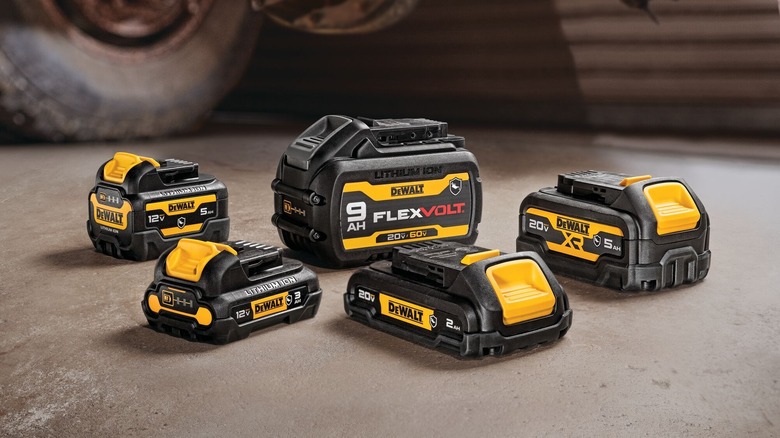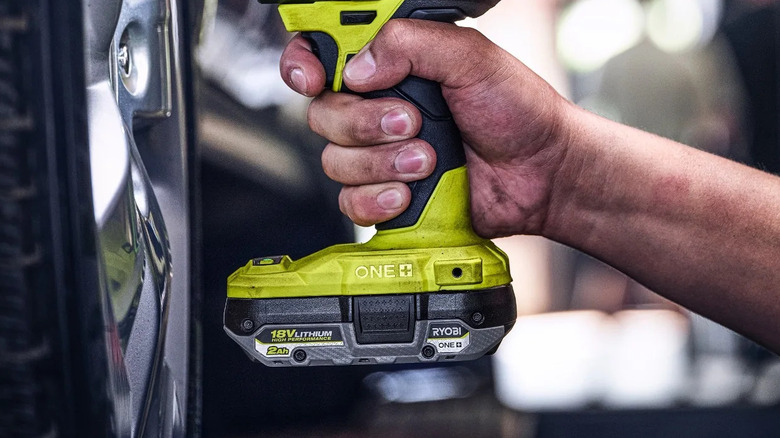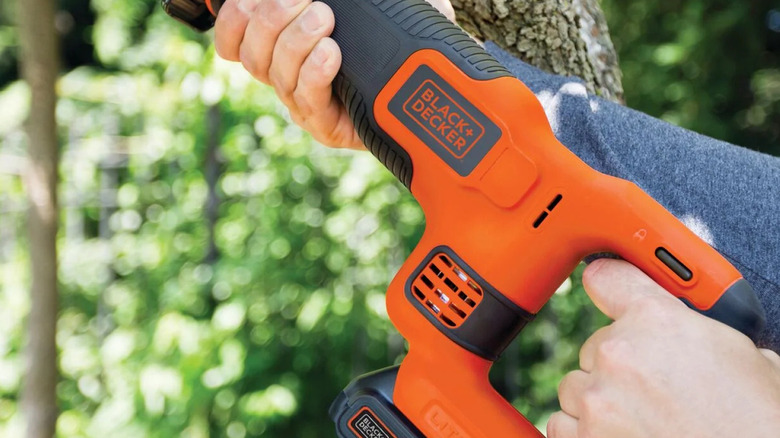What Does A Higher Ah On Your Power Tool Battery Actually Mean - More Power Or Longer Runtime?
We may receive a commission on purchases made from links.
So you're shopping for a new battery for your cordless drill, but as you browse through the options online, you notice one specification that particularly stands out: the Ah rating. For many major power tool brands, there are normally several tiers of Ah rating for just a single battery type. For instance, Ryobi's 18V ONE+ battery comes in 1.5Ah, 2Ah, 4Ah, 6Ah, 8Ah, and 12Ah variants. Meanwhile, DeWalt's 20V MAX* XR POWERPACK includes a 4Ah and 8Ah model. This extensive Ah range makes sure you can get the best kind of battery for your needs.
Ah stands for ampere-hour and is a measure of a battery's capacity. You'll usually see this rating printed on the side of the battery, along with the output voltage. But what does a higher Ah even mean for your power tool? According to most manufacturers, a higher Ah is associated with a longer runtime. However, there are also tests that suggest it could mean more power too.
Higher amp-hour equals longer runtime?
By definition, a battery's ampere-hour rating refers to the amount of charge it can store. The higher the Ah, the greater its capacity — similar to how a bigger cookie jar holds more cookies. This larger capacity means it will take longer to empty, thus providing a longer runtime for your power tools.
Take Ryobi's hybrid work light, for example. With a 2Ah battery, it will only stay on for two and a half hours. This runtime is doubled to five hours when a 4Ah is inserted and more than tripled to eight hours when paired with a 6Ah. Meanwhile, the Makita 18V LXT 4Ah and 5Ah batteries deliver 35% and 65% more runtime, respectively, than the 3Ah counterpart.
Although it may seem ideal to get a higher Ah battery, there are some downsides to it. For one, it's generally more expensive. While the Craftsman V20 4Ah battery costs just $119, the 9Ah model will set you back $179. Then, there's also the issue of weight. A larger capacity equals a heavier unit. Just look at the Ryobi batteries: the weight of Ryobi 18V 12Ah battery is over three pounds, a big jump from the 2Ah variant that only weighs a pound.
That's why before picking which Ah rating is best to buy, consider your needs first. If your task is normally done quickly or you often work with low-power tools like cordless drills and lights, you can go with a 1Ah to 2Ah battery. For medium-duty jobs that use circular saws, string trimmers, and the like, an amp-rating of 3Ah to 4Ah will work best. And when dealing with saws and lawn mowers, a battery with 5Ah or higher is recommended.
Higher amp-hour equals more power?
While a battery's amp-hour directly correlates to its runtime and not power, actual tests have shown that a higher Ah can still provide increased performance. When Ryobi evaluated its 4Ah and 8Ah models of the 18V ONE+ Lithium High Performance battery, it found a noticeable difference in how they handle heavy-duty jobs. Using the Ryobi 6-1/2" circular saw, the 8Ah can slice through two 3/4 OSB panels stacked on top of each other about five seconds faster than the 4Ah. Cutting a 10" log with a 12" chainsaw also showed how quickly the 8Ah battery can do the task, finishing in only 20 seconds, compared to over 23 seconds on the 4Ah.
Pro Tool Reviews reported the same findings when comparing the Makita 18V LXT 2Ah and 5Ah batteries. The 5Ah provided a 25% power boost when drilling a hole over a pair of untreated 2x4 lumber, and roughly 10% boost when drilling through five layers of OSB panels.
Besides getting the job done faster, a power tool run by a battery with a higher Ah won't slow down as much as that with a lower Ah rating. This means a smoother overall experience and increased productivity.
However, Pro Tools Review did mention that you likely won't spot a difference when using either batteries for light applications. The higher Ah battery proves to be more helpful in more demanding jobs that need more power. Some users also note that even in tougher use cases, a small jump in Ah rating — such as from 4Ah to 6Ah — might not deliver a significant improvement.


